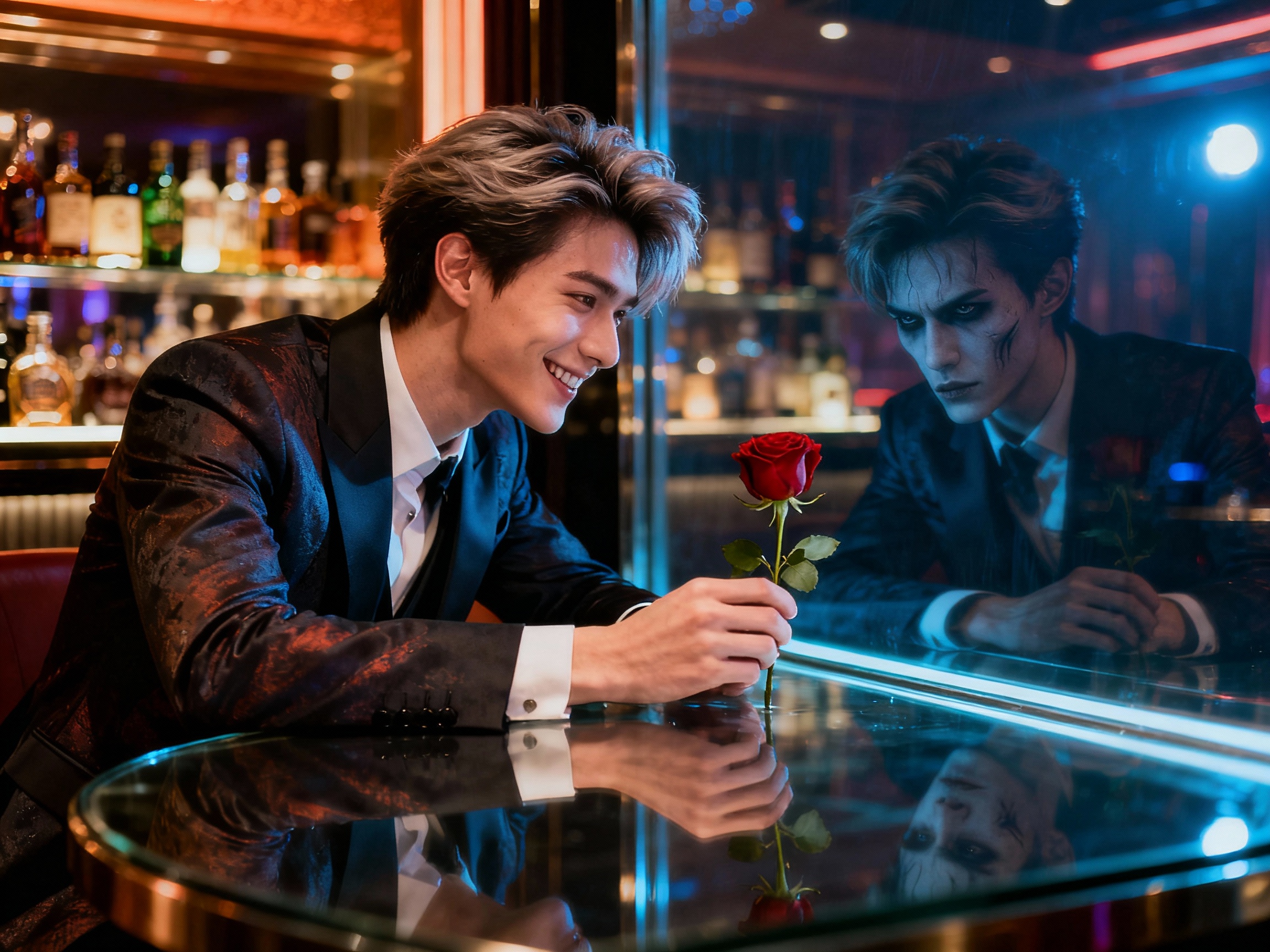
Part 1: Social Context and Background of the Shinjuku Tragedy
Introduction: Behind the Scenes of Nighttime Shinjuku
The incident with Yuka Takaoka in May 2019 is not just a story of a domestic conflict escalating into violence. It is a symptomatic case that reveals the underside of life in Tokyo's entertainment districts, where illusions, easy money, and human tragedies intertwine. Analyzing this event allows us to see not an isolated crime, but a complex system of social and economic relationships characteristic of places like Kabukicho.
Main Characters: Provincials in the Entertainment Epicenter
Both central figures of this story - Yuka Takaoka and the host known by the stage name "Runa" - hail from the Japanese provinces. This is a typical situation for Tokyo's entertainment industry, which attracts young people from the regions with promises of quick earnings, fame, and a vibrant life. "Runa" was from Tochigi Prefecture; Takaoka's origins are not precisely known, but her biography fits this pattern.
Until October 2018, their life paths did not cross. Yuka Takaoka made a career as a manager and PR specialist in a new bar "Tokimeki Binbim," which opened that very month. Her duties were multifaceted: from managing the establishment to actively promoting it on social media. She created and maintained accounts on Instagram and TikTok, where she appeared under the name Yuno Kaede. This name interestingly echoes the names of well-known anime culture characters with complex psyches - Yuno Gasai ("Future Diary") and Kaede from "Elfen Lied," which later sparked much speculation among internet users.
The "Tokimeki Binbim" bar positioned itself as a place of nostalgia for 80s pop culture. The services involved clients (predominantly middle-aged men) spending time with young girls, drinking, and singing karaoke. The waitresses were paid 2000 yen per hour (~$18), which is a standard but not high rate for such establishments. The bar's location in the heart of Kabukicho made its competition extremely high, explaining aggressive promotion methods, including soliciting clients on the street.
Meanwhile, a few hundred meters away, at the host club "FUSION -By Youth," "Runa" was building his career. The work of a host involves constantly seeking new clients, often happening outside the club: in other bars, on the streets, or through social media. Most likely, it was within such "client-seeking" that he visited "Tokimeki Binbim" in the fall of 2018 and met Yuka Takaoka.

Part 2: The Mechanics of Relationships and the Trigger of the Crisis
From Professional Interaction to Personal Relationships
The acquaintance of a bar manager and a host in the context of Kabukicho is a common occurrence. Their professional environments are closely linked. However, in this case, business communication quickly turned into a personal relationship. Takaoka, being part of the entertainment industry herself, was vulnerable to the charms of a professional seducer. Hosts are manipulators whose work is based on the ability to create the illusion of special, trusting relationships with clients.
Subsequently, Yuka accepted "Runa's" invitation and visited his club. This is standard practice: a host attracts new guests to their establishment, thereby increasing their rating and income. It is known that "Runa's" career took off: by May 2019, he became the third most popular host at "FUSION," and his rise to the first place was scheduled for June 1. Undoubtedly, financial support from Takaoka, who regularly visited the club, contributed to this ascent.
Their relationship went beyond client-host and turned into something more. In 2019, Takaoka quit "Tokimeki Binbim" and rented an apartment in a prestigious residential complex in Shinjuku. The rent for such housing is estimated at 140-150 thousand yen (over $1300) per month. This step was apparently taken for living together with "Runa." It can be assumed that the host maintained the illusion of an imminent family creation, prompting Yuka to make such an expensive investment in their shared future.
Accumulation of Crisis Factors
By spring 2019, several critical factors converged in Yuka Takaoka's life, creating the perfect ground for tragedy:
Financial Collapse: She lost her job but continued to bear high housing rental expenses. Additionally, significant funds were spent on supporting "Runa's" career in the host club - an establishment she herself visited as a client.
Emotional Exhaustion: Relationships with a host by definition cannot be stable. "Runa," whose job involved interacting with other women, was unlikely to be a faithful partner. The realization that she was being used, coupled with financial problems, led to a deep mental crisis.
Social Pressure: In Japan, the status of being unemployed carries a heavy social stigma and is a powerful source of stress.
By May, the catastrophe likely became inevitable. The money ran out, illusions were dispelled, and the prospect of ending up on the street became real. Against this backdrop, Takaoka formed a clear plan: to kill the person who ruined her life and then take her own life.

Part 3: Incident, Consequences, and Sociocultural Analysis
Events of May 23, 2019
On May 23, around 4:00 PM, "Runa" came to their shared apartment. It was at this moment that Yuka Takaoka attempted to execute her plan. According to some reports, the weapon used was a kitchen knife bought for their "family" household, adding a bitter irony to the tragedy.
She managed to inflict two stab wounds on the host, but failed to kill or seriously incapacitate him. "Runa," bleeding, managed to escape from the apartment and ran to the elevator in the building's lobby. Takaoka, donning a jacket and slippers, with a phone in hand, chased after him. The entire sequence of events - from the apartment to the lobby - was covered in blood.
At the scene or immediately after, Yuka Takaoka herself called the police on the emergency number 110, leading to the rapid arrival of law enforcement. The host was hospitalized with a penetrating back wound, but his life was not in danger. Takaoka herself was detained.
Media and Internet Image: Menhera vs Yandere
After the incident, Yuka Takaoka's image was quickly mythologized in the Japanese internet segment. She was dubbed a "menhera" (from English mental health). This term in Japanese online culture describes a style that aestheticizes mental disorders, making them a fashionable attribute. This was also fueled by her smile in photos from the police car, interpreted as a sign of insanity.
The attempt to label her as "yandere" (a character-maniac in love from anime) was less substantial. The key "evidence" was a bloodstained diary that appeared online. However, it was later revealed that these images were unrelated to the case: the diary was sent by a fan to the vocalist of the band R-Shitei, who posted it on Twitter. Thus, the main media narrative about Takaoka as a "real yandere" was constructed and inflated by users and bloggers based on false information.
Conclusions: Tragedy as a Systemic Problem
The case of Yuka Takaoka is not a story of a "crazy fan." It is a tragedy that grew out of the specific environment of Tokyo's "night underbelly."
Economic Vulnerability: Young provincials coming to Tokyo often find themselves trapped in low-paid and unstable jobs in the entertainment industry, where it is easy to earn but just as easy to lose everything.
Psychological Exploitation: The work of a host is built on emotional manipulation. Transferring these professional practices into personal relationships inevitably leads to their deformation and destruction.
Identity Crisis: Losing a job and status in Japanese society is a severe blow. Combined with the collapse of personal illusions, it can become a trigger for desperate actions.
Kabukicho, romanticized in popular culture (as in "Gintama"), is in reality a place where similar human dramas unfold daily. The story of Yuka Takaoka and the host "Runa" is just one of them, brought to public attention due to its cinematic nature and cruel logic, where personal downfall, professional success, and criminal resolution were concentrated within a few blocks of Tokyo's most ambiguous district.

Leave a comment
Comment